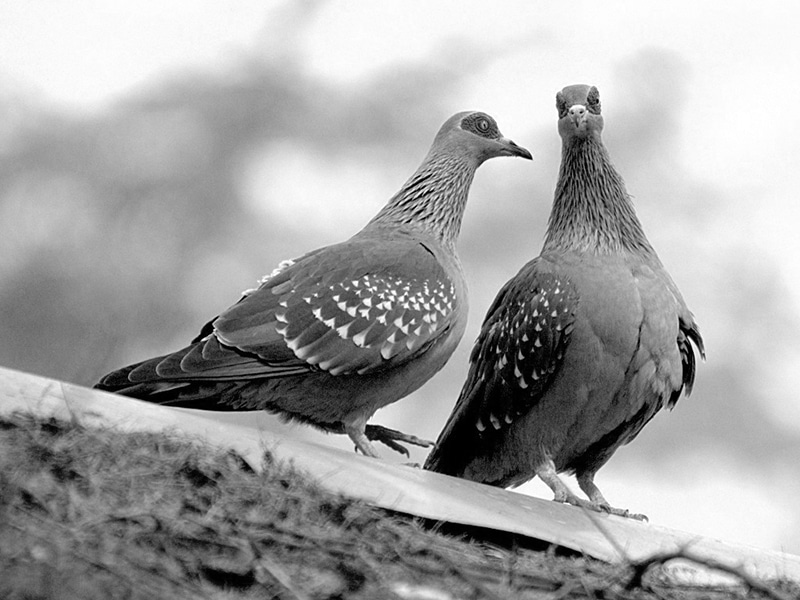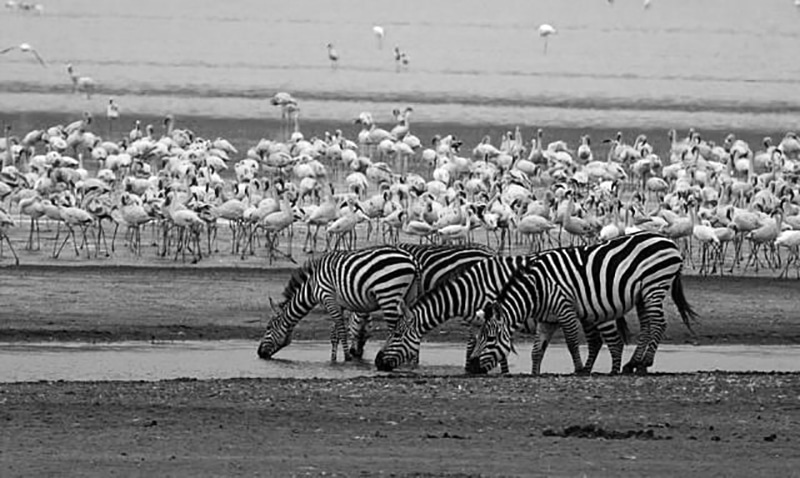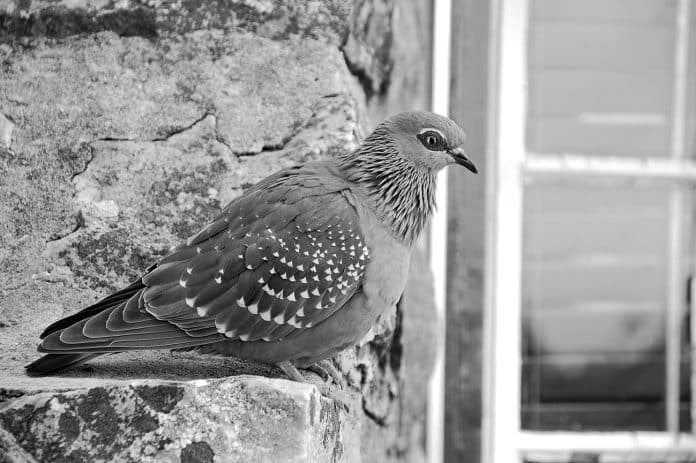Discover the Majestic Beauty of the Speckled Pigeon in Tanzania
Introduction to the Speckled Pigeon in Tanzania
The speckled pigeon is a beautiful and fascinating bird species that can be found in Tanzania. With its distinctive speckled plumage and graceful flight, this pigeon is a true symbol of natural beauty. In this article, we will take a closer look at the physical characteristics, natural habitat, diet, breeding behavior, and conservation status of the speckled pigeon in Tanzania. We will also provide you with tips on where to spot these magnificent birds and how to best enjoy birdwatching and photographing them.
Physical Characteristics of the Speckled Pigeon
The speckled pigeon, scientifically known as Columba guinea, is a medium-sized bird that measures around 30 centimeters in length. It has a plump body, short legs, and a small head. One of its most striking features is its beautiful plumage, which is predominantly gray with distinct black and white speckles all over its body. The wings are long and broad, allowing the pigeon to soar gracefully through the air. The speckled pigeon also has a distinctive black collar around its neck, which adds to its overall elegance.
Natural Habitat and Distribution of the Speckled Pigeon in Tanzania
The speckled pigeon is native to Sub-Saharan Africa and can be found in various countries, including Tanzania. In Tanzania, these pigeons are commonly found in savannah woodlands, open grasslands, and rocky areas. They are known to thrive in both rural and urban environments, often making their nests on buildings and other man-made structures. The speckled pigeon is a highly adaptable bird, and its ability to survive in different habitats has contributed to its wide distribution throughout Tanzania.
Diet and Feeding Habits of the Speckled Pigeon
The speckled pigeon is primarily a herbivorous bird, feeding on a variety of seeds, grains, fruits, and leaves. In Tanzania, they are often seen foraging on the ground for fallen seeds and fruits. These pigeons have a unique ability to swallow seeds whole and grind them in their muscular gizzard, which helps in digestion. They are also known to drink water by sucking it up through their beak, as opposed to taking sips like other birds. The speckled pigeon is a diurnal bird, meaning it is most active during the day, and its feeding habits reflect this.
Breeding Behavior and Mating Rituals of the Speckled Pigeon

Breeding among speckled pigeons usually occurs during the rainy season in Tanzania, which provides an abundance of food and nesting materials. The male pigeon initiates courtship by puffing up its feathers, cooing loudly, and performing elaborate flight displays to attract a female mate. Once a pair is formed, they engage in mutual preening and nest-building activities. The female pigeon typically lays one or two eggs in a simple nest made of twigs and leaves. Both parents take turns incubating the eggs for about 15 to 18 days until they hatch. The young pigeons, called squabs, are cared for by both parents and fledge after approximately four weeks.
Threats and Conservation Status of the Speckled Pigeon in Tanzania
Despite their adaptability, speckled pigeons face several threats in Tanzania. Habitat loss due to deforestation, urbanization, and agricultural expansion poses a significant risk to their survival. Additionally, they are often hunted for food and sport by humans. The International Union for Conservation of Nature (IUCN) has classified the speckled pigeon as a species of least concern, but continuous monitoring and conservation efforts are essential in ensuring their long-term survival. It is crucial to raise awareness about the importance of protecting their natural habitats and implementing sustainable practices to mitigate the threats they face.
Places to Spot the Speckled Pigeon in Tanzania

If you’re an avid birdwatcher or simply interested in observing the beauty of the speckled pigeon in Tanzania, there are several locations where you have a good chance of spotting these magnificent birds. National parks such as Serengeti, Tarangire, and Lake Manyara are known to be home to diverse bird species, including the speckled pigeon. These parks offer a variety of habitats where the pigeons can be found, ranging from woodland areas to open grasslands. Additionally, urban areas and towns in Tanzania often have colonies of speckled pigeons nesting on buildings and other structures, providing excellent opportunities for observation.
Tips for Birdwatching and Photographing the Speckled Pigeon
Birdwatching and photographing the speckled pigeon can be an incredibly rewarding experience. Here are a few tips to enhance your chances of capturing these birds in their natural habitat:
- Be patient and observant: Speckled pigeons can be shy and easily startled. Take your time to find a good vantage point and observe their behavior from a distance.
- Use camouflage: To avoid disturbing the pigeons, try to blend in with your surroundings by wearing neutral-colored clothing and using natural cover.
- Choose the right equipment: A good pair of binoculars or a telephoto lens will allow you to get a closer look at the speckled pigeons without getting too close.
- Learn their calls: Familiarize yourself with the distinctive cooing sounds made by the speckled pigeons. This will help you locate them more easily.
- Respect their space: Remember that these birds are wild animals, and it is important to observe them from a respectful distance without causing any harm or disturbance.
Interesting Facts about the Speckled Pigeon
Here are a few interesting facts about the speckled pigeon that make them even more captivating:
- Speckled pigeons are highly social birds and are often seen in large flocks, especially during the non-breeding season.
- They have a unique adaptation called “crop milk” which is a secretion produced by the crop lining to feed their young. Both male and female pigeons can produce crop milk.
- Speckled pigeons are excellent navigators and have a remarkable ability to find their way back to their nests even after being released hundreds of kilometers away.
- These pigeons have a lifespan of around 10 to 15 years in the wild, although some individuals have been known to live longer.
Appreciating the Beauty and Importance of the Speckled Pigeon in Tanzania
The speckled pigeon is not only a stunning bird to behold but also an important part of Tanzania’s biodiversity. By understanding their physical characteristics, behavior, and habitat requirements, we can better appreciate the unique beauty they bring to the natural world. It is crucial that we take steps to protect their habitats and ensure their long-term survival. So, whether you’re a passionate birdwatcher or simply someone who appreciates nature’s wonders, take the time to spot and admire the majestic beauty of the speckled pigeon in Tanzania.
For more articles related to Wildlife in Tanzania (Animals), click here!


































